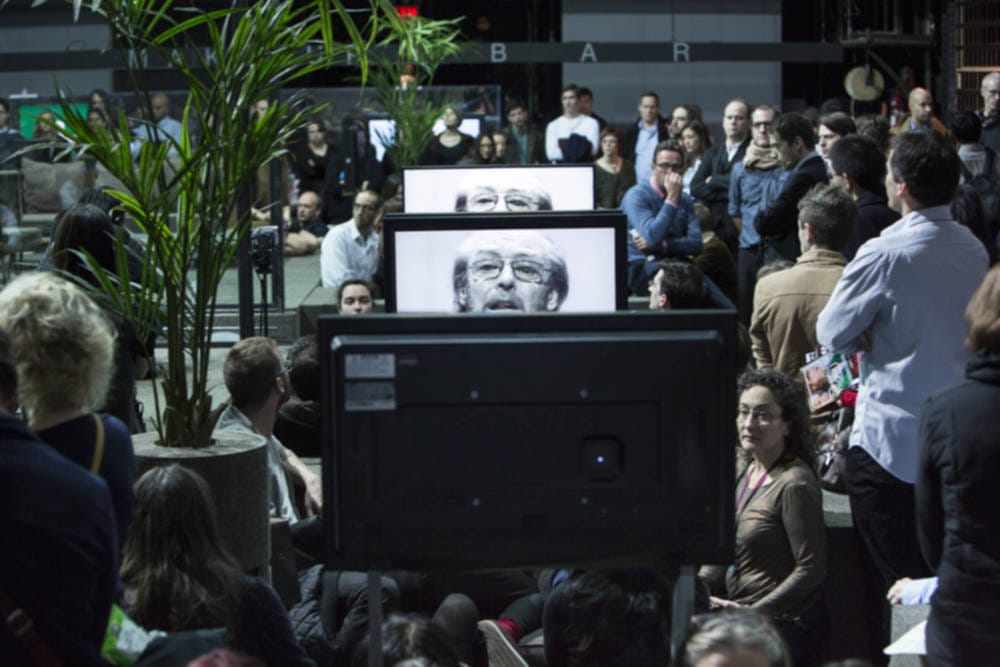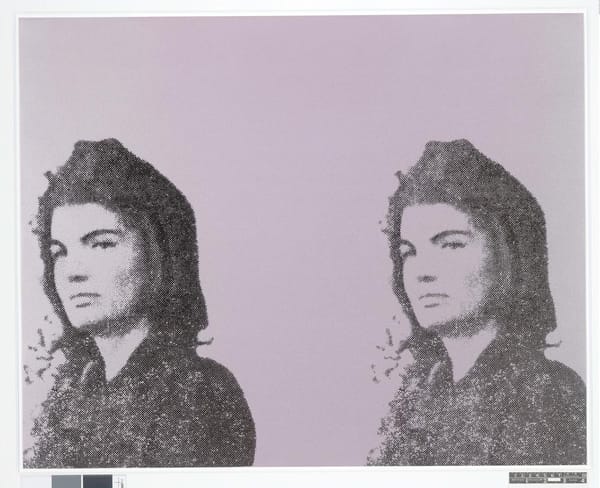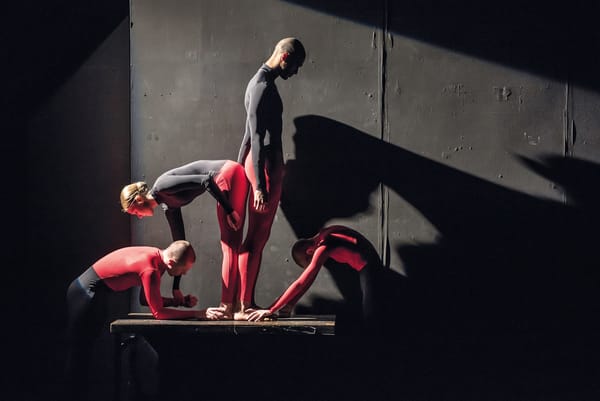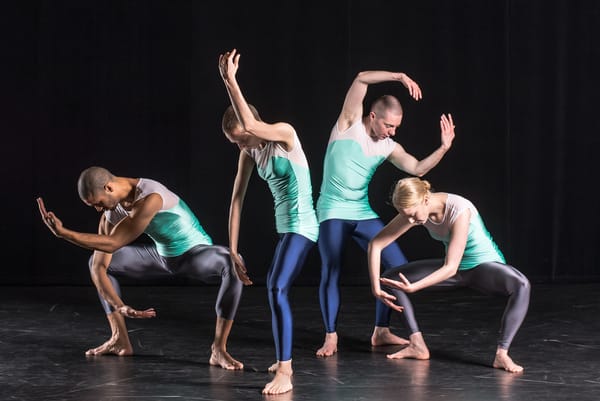Roman Tragedies: A medieval masterpiece for a Facebook Live world
The Barbican's staging of Ivo van Hove's epic Shakespeare adaptation is bold and daring

Enobarbus is a dying man. So overcome with grief at having betrayed his closest friend, Mark Antony, to Octavius Caesar, he can no longer bear to live. His cries and pleas for forgiveness are translated from Dutch to English courtesy of surtitles. A cameraman follows him as he stumbles across the stage; his lamenting projected above the set for the audience gawk at.
Suddenly, he exits stage left and proceeds to bound up the stairs, past the stalls, cameraman in pursuit. The live video feed continues as Enobarbus meanders out of the Barbican onto the road. As he continues to confess his sins, a member of the public appears on the footpath. He is carrying his shopping and stops dead at the sight of man rolling in the tarmac, yelling in Dutch. The camera zooms in on the perplexed face of the passer-by, to the joy of every member of the audience. Eventually, Enobarbus returns to the stage, still in hysterics, where he proceeds to end his suffering. ‘Enobarbus 81 – 31 BC’ reads the caption, as a bird’s-eye view of the general’s body is met with raucous applause.
Roman Tragedies, a 6-hour long, modern-day adaptation of Shakespeare’s Coriolanus, Julius Caesar, and Antony and Cleopatra, is a theatrical production, nay, entertainment experience, like no other. Directed by Ivo van Hove and performed by Toneelgroep Amsterdam, the show returned to the Barbican this weekend after its acclaimed initial run in 2009.
So grand is the production, so monumental in its ambition, it’s easy to see why its residency hasn’t extended beyond 3 days. Audience members are free to walk the stage, change their seats, view the performances in person or on any of the multiple screens. It’s a wonderful, but exhausting spectacle. That the cast and production team are able to pull it off – and put barely a foot wrong – is near miraculous
The adaptations are set in a sprawling political conference room, with declarations of war framed as heated debates. TV screens are adorned with footage from real world news, and rolling headlines fill the audience in on action that has had to be skipped in the interest of time. Cameras – both manned and stationary - follow the actors wherever they go, providing an essential perspective into the action when the characters find themselves buried in a sea of audience members. The setting and the camera shots, along with the humour and tragedy, combine to give a Shakespearean episode of The Thick of It. Julius Caesar even packs up his desk upon his death.
With the run scale and runtime in mind, one would forgive the actors on prioritising survival over quality performance. Not so, for the actors perform their – up to 3 – different roles with the grace and power you expect from a RSC adaptation. Hans Kesting’s “Friends, Romans, countrymen…” speech as Mark Antony and Chris Nietvelt’s portrayal of Cleopatra as she mourns his death provide the standout performances, with their ability to transform what was an excitable crowd into one of deathly silence in the space of seconds. When ultimately the two lovers come together for what they know will be their final embrace, to the sound of Bob Dylan’s Not Dark Yet, this reviewer was moved to near tears.
So grand is the production, so monumental in its ambition, it’s easy to see why its residency hasn’t extended beyond 3 days
The most spine-tingling moments, however, come courtesy of the drum quartet, b!indman. Their insane percussion accompanies the violent strobe lights used to represent the 5 wars in Roman Tragedies. The removal of any depiction of such battles would, on the face of it, dull the proceedings. On the contrary, when the drums explode into action it is nothing short of terrifying.
So much occurs during the 6 hours, it is impossible to praise every superbly planned and executed element in one review. Nor is it possible to witness them all; depending on how you choose to view the show, each audience member’s experience will be unique. Spending at least sometime on stage is essential. From watching an actor practise their lines in the back of crowd, sharing a sofa with Julius Caesar, or dodging a falling plant that an exacerbated Coriolanus has knocked over, you are transported into a world that normal audiences simply aren’t privy to. Stage time, however, comes at the cost of missing some, if not a great deal, of dialogue. Unless you can understand Dutch, listening is out the window, and the stage is often so crowded it can be hard to find room around one of the subtitled screens.
Instead, it often proves more enjoyable to watch the action from the traditional vantage point of the stalls or the circle. That way you avoid being caught in the middle of a warring Mark Antony and Marcus Brutus, where your only escape is to run off the stage into the front row of the audience, spilling half your wine in the process.
Roman Tragedies is not without its flaws. The picture quality – from the stationary cameras in particular – gives the impression of being back in a GCSE English classroom forced to watch Shakespeare on VHS rather than the stage. Antony and Cleopatra, the longest of the 3 plays - with a run time of 2 hours 10 minutes – could have been abridged further to shorten the marathon. Letting audience members have unfettered access to the stage is not without drawbacks – though not the fault of any member of the cast or crew - when a member of the audience decides to rush up to the dying Caesar to take a selfie, the scene can’t help but lose some of its punch.
That being said, it would be criminal to award the production anything less than 5 stars. It’s errors pale in comparison to its achievements, and the difficulty in trying to assimilate every piece of the performance is what makes it so unique.
Tudor audiences did not view plays with the same reverence as today’s theatre goers. They stood, they gossiped, they heckled the actors. Were they alive today it’s hard to imagine they’d feel comfortable in a normal Shakespeare performance at the Barbican, NT, or even the Globe. Roman Tragedies, however, is far from normal Shakespeare. One would hazard a guess, that despite the TV screens, the modern attire and constant use of smartphones, the Tudors would be just as at home with this masterpiece as the children, millennials, and baby boomers who witnessed it over the weekend. A medieval masterpiece for a Facebook Live world.








